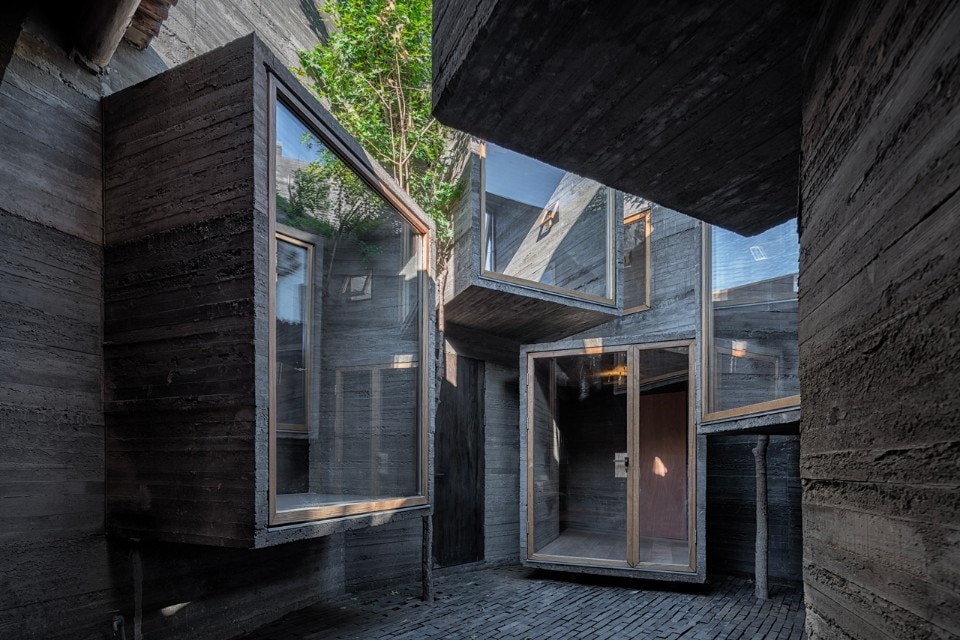– Designed by ZAO in Beijing, Micro Hutong inherits the intimate scale of the traditional hutong, revitalizing its social condensing capabilities, while enhancing it with spatial improvements.
– Squatting is a basic human instinct, and Robot 3 Studio uses the wormhole theory to revive neglected places in Beijing, giving a psychological shift to a ramen restaurant.
– After launching a kickstarter campaign this summer, Daan Roosegaarde’s project to create a purifying tower for polluted skies becomes real, starting from Beijing.
– With an open addition in glass and bamboo to welcome visitors and children, AaL and Atelier OPA worked on a project to save from demolishment the last historic house of a small village in China.
– Arch Studio designed a maple wood and recycled paper table that serves for short naps and plays with the contrast between its soft, ondulating surface, and the hard core.
– X Living designed a dress shop in Hamgzhou, interpreting the dressing philosophy of women’s clothing using different techniques in designing the four spaces.
– China is the most critical and significant example – for the numbers/proportions with which building impacts on the economy and in society and for the speed and entity of the modernisation phenomena in motion – if we are to determine and assert a potential social and collective role for architecture.
– Coop Himmelb(l)au’s MOCAPE in Shenzhen, combines two independent cultural institutions that are merged in a monolithic body surrounded by a multifunctional facade.
– Kai M Caemmerer catches Chinese new cities before they are populated by mass, when they appear as empty, waiting places.
– The exhibition at the Guggenheim in New York features newly commissioned works by Chinese artists united by the use of storytelling, to propose alternative ways of looking at places.
Top: ZAO/standardarchitecture, Micro Hutong, Beijing, 2016


